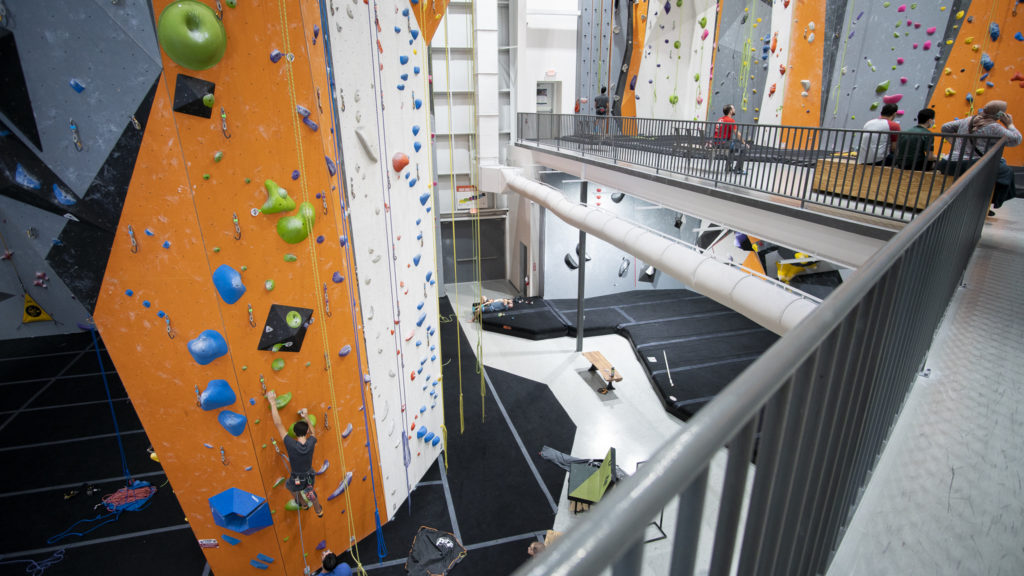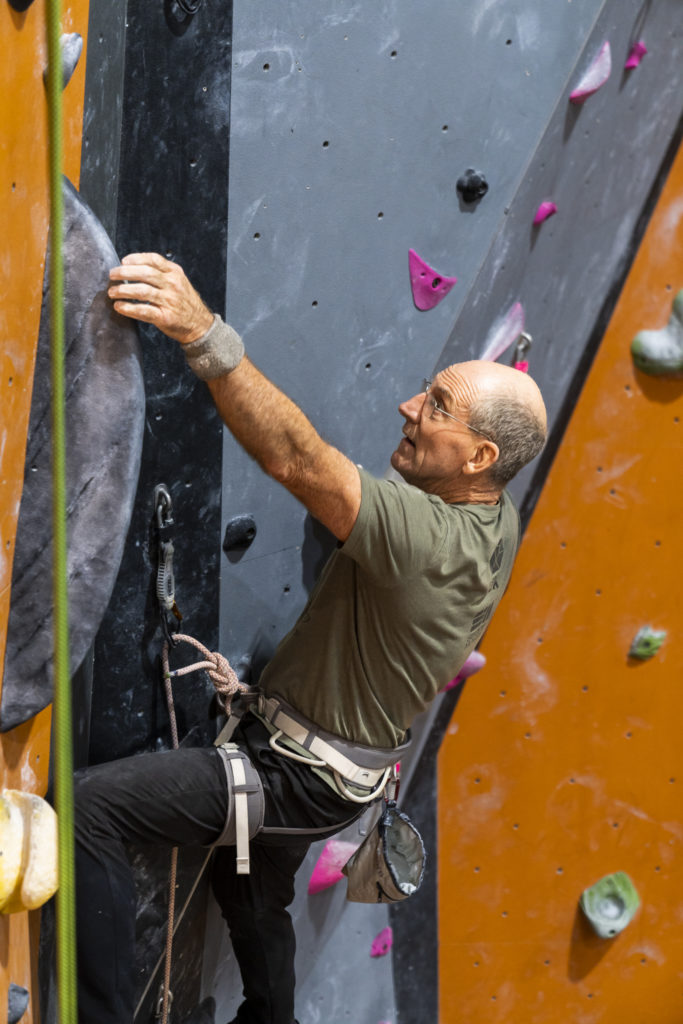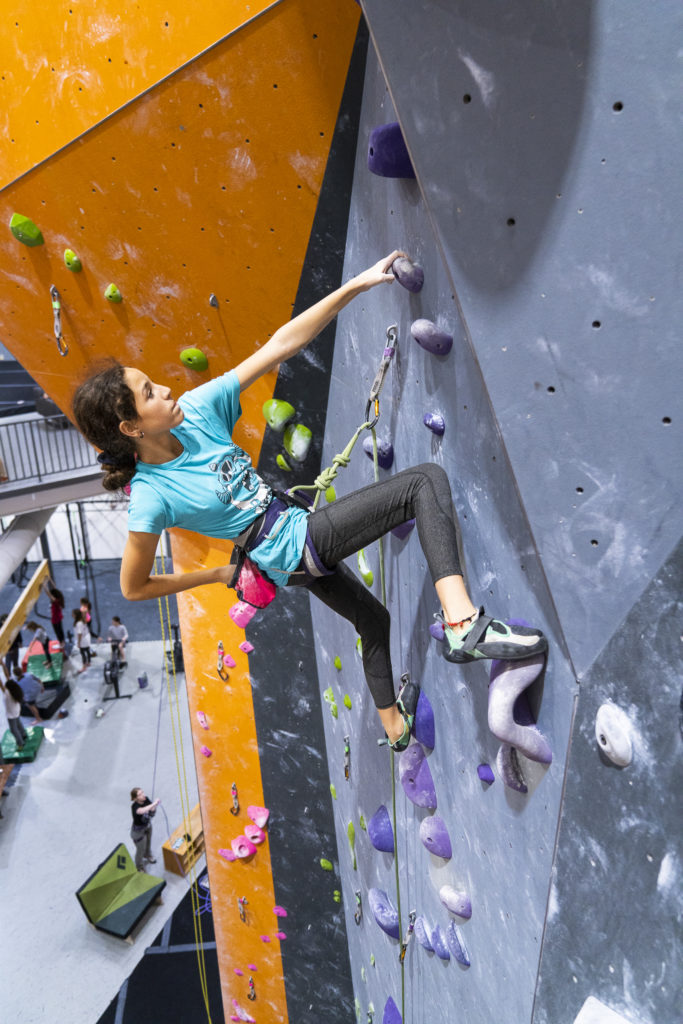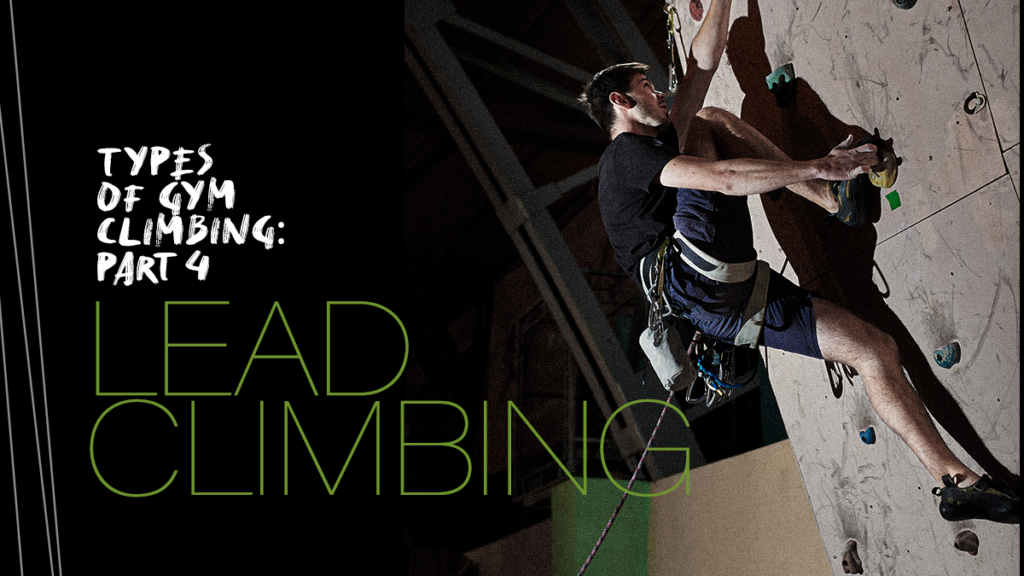Whether a climber has grown tired of regular old top roping and wants to branch into new parts of the gym or is interested in climbing outside, lead climbing can be a significant next step in one’s skills journey! Though some climbers find their beginnings in learning to lead climb, this type of climbing is often entered into after a climber has grown comfortable and competent in the skills and cautions of top rope.

“Lead climbing” refers to climbing that begins without the rope anchored to any above point. That requires the climber to “lead” up the route, securing their rope through anchor points as they ascend. Within the category of lead climbing, there exists “sport climbing,” which utilizes anchored bolts in a wall or rock face, and “trad climbing,” which requires a climber to first place a piece of gear in the rock, which serves as an anchor point. Trad climbing is an outdoor form of lead climbing, whereas sport climbing takes place outdoors and indoors. Because of this, referring to this type of indoor climbing as either lead or sport will be understood.
Risks of Lead Climbing
Lead climbing introduces more risk and requires learning new skills; therefore, it should not be attempted by anyone not well-versed in the lead or without an experienced lead partner. Lead climbing begins with the climber tied to one end of the rope and the belayer attached to the other using a belay device. The rope starts on the ground, not yet linked to any anchor. Along lead routes, bolts are installed in the wall, similarly to climbing holds. As the climber ascends their route and reaches these spots, they secure one end of equipment called a quickdraw to the bolt. In most climbing gyms, the quickdraws will already be there for you! The climber does this all while holding themself up on the route’s holds! The climber then feeds the rope from their harness and secures it through the other end of the quickdraw. The quickdraw creates an anchor point in the system, allowing the climber to be caught if they fall, as long as an appropriate amount of slack is taken out of the system and all gear is secure.

As the climber moves up, slack is introduced to the system by the belayer as the length of rope needed increases with the height of the wall. The climber continues up the route, placing quickdraws or clipping into existing quickdraws as the number of bolts allows until they reach the top. Here they will put a top anchor and secure their rope through it. In the climbing gym, they will have some pre-existing anchor systems. Often this is simply two opposite and opposing quickdraws, but it may also be a pair of shutters or gates that you may slide the rope into. The climber can then be lowered back to the ground from this anchor. Creating and placing anchors and “cleaning” a route (removing all placed gear and repelling down from the top of a route) requires additional knowledge and equipment and is only necessary outdoors.

So, lead is sounding pretty easy, huh? The tricky part is, if a climber clips into a quickdraw, continues up (bringing slack into the system), but falls before successfully attaching their rope to the next quickdraw or top anchor, the climber will fall for as much slack as is in the system! These falls can be far and a bit jolting and are one of the factors making lead climbing so much riskier than other types of gym climbing. Significant risks are introduced if climbers misplace gear or incorrectly clip their rope into quickdraws. If the amount of slack in the system is not monitored correctly and adjusted quickly enough by the belayer, both could be seriously injured.
While the risk of longer and more dangerous falls and injuries less typical to top roping is why some climbers steer clear from lead, it’s also why some climbers can’t get enough. Let the additional risk keep you on your toes, but don’t let it discourage you from getting into the lead if you find it appealing! Minimizing risk through well-practiced risk management and skillful communication by the climber and the belayer can allow for successful and thrilling lead climbing experiences. If you feel ready to take your next steps into lead climbing, talk to your gym’s staff to learn more about clinic offerings or other lead climbing and skill-building opportunities!

